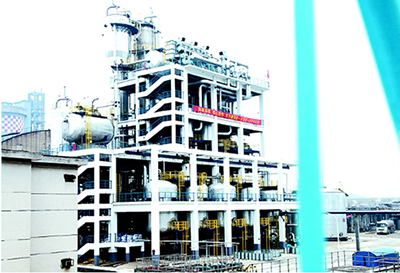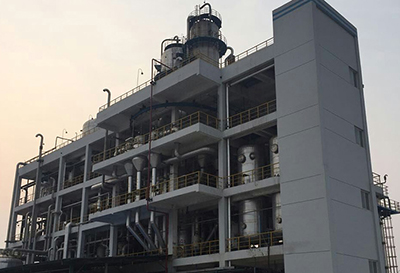Hydrogen peroxide (H2O2) is an important industrial chemical used in various applications, such as bleaching of pulp and textiles, water treatment and oxidation reactions. It is commonly produced in large-scale chemical plants through the autoxidation of hydrogen peroxide. There are two main processes used in Hydrogen Peroxide plants: Hydrogen Peroxide by fixed-bed process and Hydrogen Peroxide by fluidized-bed process.
Fixed-bed Process Hydrogen Peroxide
Fixed-bed processes involve a fixed bed of catalysts that are used to promote the reaction of hydrogen peroxide production. In these processes, the hydrogen peroxide reaction is typically carried out in a reactor vessel that contains a bed of catalysts. The feed stream, usually containing hydrogen and oxygen, is introduced into the reactor vessel and passed over the bed of catalysts, where the reaction takes place. The reaction products, hydrogen peroxide and water, are then separated from the catalyst bed and further purified.
One of the main advantages of fixed-bed processes is their relatively low cost, as they require less expensive catalysts compared to fluidized-bed processes. Additionally, fixed-bed processes are relatively easy to operate and maintain, as they do not require complex equipment or extensive maintenance procedures. However, a disadvantage of fixed-bed processes is that they can experience problems with catalyst deactivation, as the catalysts can become fouled or poisoned over time. This can lead to decreased efficiency and increased costs over time, as the catalysts need to be replaced or regenerated.

Hydrogen Peroxide Plant (Fixed Bed Process)
Fluidized-bed Process
Fluidized-bed processes, involve a bed of catalysts that is fluidized, or suspended, in a gas stream. The feed stream is introduced into the reactor vessel, where it is mixed with a fluidizing gas, typically air or nitrogen, to create a fluidized bed of catalysts. The reaction of hydrogen peroxide production then takes place in the fluidized bed, where the hydrogen and oxygen are mixed with the catalysts and react to produce hydrogen peroxide and water.
One of the main advantages of fluidized-bed processes is their increased efficiency and improved catalyst life compared to fixed-bed processes. The fluidized bed allows for better mixing and heat transfer, leading to more complete reaction and better catalyst utilization. Additionally, fluidized-bed processes are more resistant to catalyst deactivation, as the catalysts are constantly being agitated and refreshed in the fluidized bed. This can lead to lower costs and improved reliability over time.

Hydrogen Peroxide Plant (Fluidized Bed Process)
In conclusion, both fixed-bed and fluidized-bed processes have their advantages and disadvantages in the production of hydrogen peroxide. Fixed-bed processes are generally less expensive and easier to operate, while fluidized-bed processes offer improved efficiency and better catalyst utilization. The choice between the two processes will depend on the specific requirements and constraints of the application, including cost, efficiency, and catalyst life.
SL Tec is the leading Hydrogen Peroxide Production designer and guide in the field. If you want to know more information about fixed-bed vs fluidized-bed processes in Hydrogen Peroxide production, please feel free to contact us, we would like to provide professional answers to ant questions with profession.

















